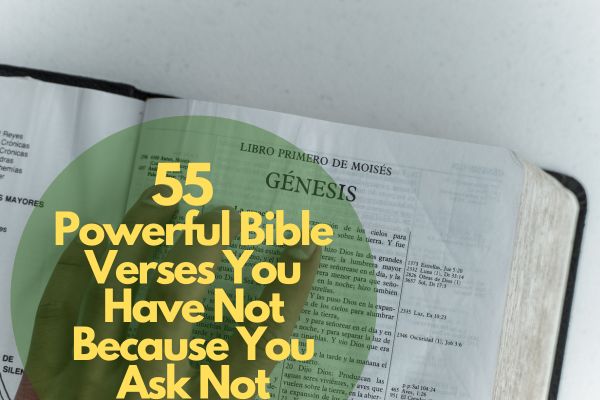Citing sources correctly is a fundamental aspect of academic writing. In this article, we will delve into the specifics of citing a Bible verse in MLA (Modern Language Association) style.
Whether you’re writing a research paper, essay, or any other academic work, adhering to proper citation guidelines is crucial to maintaining the integrity of your work and give credit to the original sources.
In this comprehensive guide, How To Cite A Bible Verse In Mla, we will cover the ins and outs of citing Bible verses in MLA style, including in-text citations and works cited entries.
How To Cite A Bible Verse In MLA
MLA style is a widely accepted format for documenting sources in academic writing. It provides guidelines for citing various types of sources, including books, articles, websites, and, yes, even Bible verses.
Why is it important to cite sources in MLA style?
Citing sources in MLA style serves several essential purposes:
– It gives credit to the original author or source.
– It allows readers to locate the original source for further study.
– It demonstrates your commitment to academic integrity and ethical research.
Citing a Bible Verse in MLA
In-Text Citations
In MLA style, in-text citations are used to indicate when you have borrowed information from a specific source. When citing a Bible verse within the text of your paper, include the book, chapter, and verse in parentheses, such as (John 3:16).
Works Cited Page Entry
Every source cited in your paper should also appear on your works cited page. For Bible citations, the entry format differs slightly. It should include the following elements:
– The title of the Bible in italics or underlined.
– The version or edition of the Bible you used.
– The chapter and verse(s) you are citing.
– The publisher’s name.
– The publication year.
Formatting Guidelines
Bible Version and Title
When citing the Bible, specify the version or edition you used. Common versions include the King James Version (KJV), New International Version (NIV), or the English Standard Version (ESV). Italicize or underline the title.
Chapter and Verse
For in-text citations, include the book, chapter, and verse separated by periods (e.g., John 3.16). In your works cited entry, use a colon (e.g., John 3:16).
Publisher and Year
Include the name of the publisher and the publication year in your works cited entry.
Including Additional Information
Sometimes, it’s essential to include additional information, such as the edition or translation of the Bible you used. This provides clarity to your readers and helps them locate the exact text you referenced.
Using Abbreviations
MLA allows the use of abbreviations for books of the Bible. Ensure consistency in your abbreviations throughout your paper. For example, you can abbreviate “Matthew” as “Matt.” or “Corinthians” as “1 Cor.”
Examples of MLA Bible Citations
Single Verse
In-text citation: (John 3.16)
Works cited entry: The Holy Bible: King James Version. John 3:16. Oxford UP, 1998.
Multiple Verse
In-text citation: (John 3.16-18)
Works cited entry: The Holy Bible: King James Version. John 3:16-18. Oxford UP, 1998.
Non-Consecutive Verses
In-text citation: (John 3.16; 4.10)
Works cited entry: The Holy Bible: King James Version. John 3:16; 4:10. Oxford UP, 1998.
Special Cases
Online Bibles
If you accessed the Bible online, include the website or database name in your works cited entry.
Translations and Editions
If you used a specific translation or edition, be sure to include that information in your citation.
Tips for Accurate Citations
– Double-check your citations for accuracy and completeness.
– Use italics or underlining for the Bible title.
– Be consistent in your citation style throughout your paper.
Common Mistakes to Avoid
– Neglecting in-text citations when referencing Bible verses.
– Omitting the works cited entry for Bible citations.
– Failing to specify the version or edition of the Bible.
Plagiarism and Academic Integrity
Plagiarism is a serious academic offense. Always give proper credit to the source of your information, including Bible verses, to maintain academic integrity.
Resources for Further Assistance
If you encounter complex citation situations or need further assistance with MLA style, consider consulting resources such as the Purdue OWL (Online Writing Lab) or your institution’s writing center.
https://www.youtube.com/watch?v=9wOJ_TrTYhQ&pp=ygUgSG93IFRvIENpdGUgQSBCaWJsZSBWZXJzZSBJbiBNTEE%3D
Conclusion
In this article, we’ve covered the essentials of citing Bible verses in MLA style. Accurate citation not only enhances the credibility of your academic work but also respects the original source. Remember to follow the formatting guidelines, use in-text citations, and create comprehensive works cited entries. By mastering these skills, you can navigate the world of academic writing with confidence.
FAQs
1. What is the purpose of citing Bible verses in MLA style?
Citing Bible verses in MLA style gives credit to the original source, allows for further study, and upholds academic integrity.
2. Do I need to include the Bible version in my citation?
Yes, specify the Bible version or edition in your citation.
3. How do I cite non-consecutive verses in MLA style?
When citing non-consecutive verses, separate them with semicolons, e.g., (John 3:16; 4:10).







